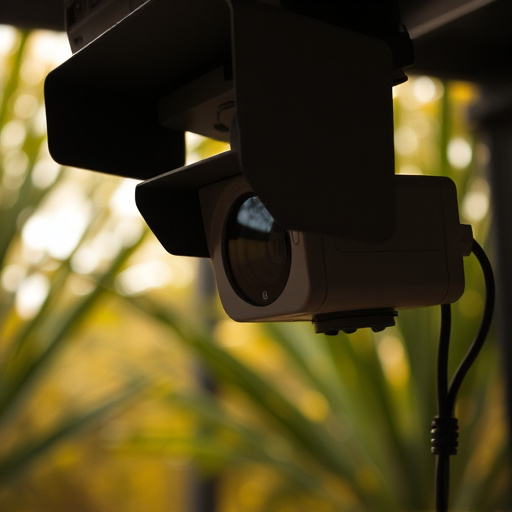Securing your home or office from counter surveillance in the digital age is crucial. Professionals identify best hidden camera locations, using advanced tools like infrared thermal imaging and UV lights to detect devices in bedrooms, bathrooms, and less obvious spots like power outlets and picture frames. A systematic approach involves dividing areas into sections, observing for tampering, and documenting findings with precise coordinates. Regular security audits, motion detection systems, and software updates further enhance long-term home security against infiltration attempts.
In today’s digital age, understanding counter surveillance is paramount. This professional guide delves into the art of detecting hidden cameras, offering a comprehensive step-by-step approach for conducting thorough sweeps. From identifying best hidden camera locations in the home to implementing robust security measures, this article equips you with essential knowledge. Discover expert tactics to enhance your privacy and protect against insidious surveillance devices, ensuring peace of mind in your sanctuary.
- Understanding Counter Surveillance: Unveiling Hidden Cameras
- Best Practices for Conducting a Comprehensive Sweep
- Identifying Common Hidden Camera Locations in the Home
- Security Measures to Prevent and Detect Surveillance After the Sweep
Understanding Counter Surveillance: Unveiling Hidden Cameras
In today’s digital age, understanding counter surveillance techniques is paramount for both professionals and homeowners looking to secure their spaces. The first step in this process is to identify potential hidden cameras, which often serve as the eyes of surveillance systems. These devices can be strategically placed in various locations, making them nearly impossible to detect without proper knowledge and equipment. The best hidden camera locations typically include areas where privacy is desired or where activity is most likely to occur—such as bedrooms, bathrooms, and home offices.
Professionals use advanced tools and methods to unveil these concealed devices, including infrared thermal imaging, UV lights, and specialized software for signal detection. By employing these techniques, experts can ensure that no hidden camera remains undetected, providing a comprehensive security solution. This meticulous process is crucial in safeguarding personal spaces from unwanted surveillance, offering peace of mind in the face of an increasingly digital world.
Best Practices for Conducting a Comprehensive Sweep
When conducting a comprehensive counter surveillance sweep, professionals must adhere to meticulous best practices. Begin by meticulously examining all potential hidden camera locations within the home security perimeter. This includes focusing on areas that offer unobstructed views and are out of plain sight, such as corners, behind furniture, or inside electrical outlets. Utilizing specialized equipment, like infrared cameras and thermal imaging devices, can aid in detecting covert surveillance devices that might be disguised as everyday objects.
During the sweep, ensure a systematic approach by dividing the area into manageable sections and meticulously searching each zone. Pay close attention to details, checking for any signs of tampering or recent disturbances. Documenting every step and finding is crucial; take clear pictures or videos and log precise coordinates for each suspected device. Remember that patience and methodical observation are key; a thorough sweep ensures maximum effectiveness in identifying and neutralizing best hidden camera locations.
Identifying Common Hidden Camera Locations in the Home
When it comes to home security, identifying potential hidden camera locations is a crucial step in ensuring your privacy. The best hidden camera locations are often spots that offer unobtrusive yet comprehensive coverage. Common areas like bedrooms, bathrooms, and living rooms may seem obvious, but professionals look for less apparent places as well. For instance, power outlets, light fixtures, and even decorative items like clocks or pictures frames can double as hiding spots for surveillance equipment.
Paying attention to corners, behind furniture, and under surface-mounted objects is essential. Memory cards and remote controls hidden in plain sight can also be a red herring. With the right tools and knowledge, professionals employ methods such as infrared imaging and thermal scanning to detect cameras that may not be immediately visible, providing a more comprehensive counter-surveillance sweep.
Security Measures to Prevent and Detect Surveillance After the Sweep
After conducting a counter surveillance sweep, ensuring long-term security is paramount to prevent and detect any new attempts at infiltration. This involves implementing robust security measures that account for potential hidden camera locations in homes or offices. The first step is to conduct a thorough inspection of all spaces, paying special attention to common best hidden camera locations such as corners, behind furniture, doorframes, and ceiling tiles. Advanced technology like thermal imaging cameras and infrared sensors can aid in identifying covert recording devices that may be disguised as everyday objects.
Regular security audits and system checks are essential to stay ahead of evolving surveillance techniques. Upgrading home or office security systems with features like motion detection, access control, and video surveillance can significantly deter potential intruders. Additionally, educating occupants about privacy best practices and fostering a culture of awareness can further strengthen security measures. Regularly updating software and firmware for all security devices ensures they remain effective against new surveillance technologies.
In conclusion, counter surveillance sweeps are crucial for safeguarding personal privacy. By understanding best practices, identifying common hidden camera locations in the home, and implementing robust security measures, individuals can protect themselves from unwanted surveillance. Staying informed and proactive is key to maintaining a secure living environment, ensuring peace of mind in today’s digital age.
